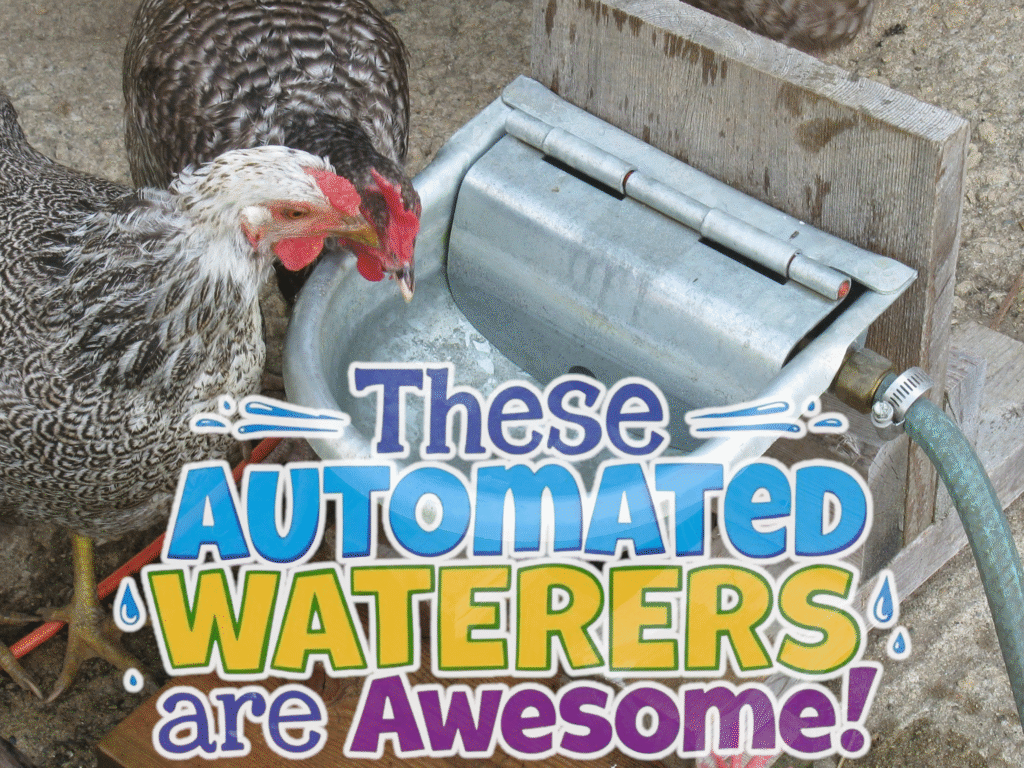
Why I Switched to an Auto Waterer for Chickens
If you’ve ever hauled heavy buckets of water across a muddy yard in 90-degree heat, just to have your chickens kick dirt into it 10 minutes later… you’ll understand why I finally said “enough’s enough.”
For the longest time, I stuck with traditional plastic gravity waterers. But between constant algae, tipping, spilling, and needing to refill it once or twice a day, it became more of a chore than it needed to be. And don’t even get me started on wintertime.
That’s when I started looking into options for an auto waterer for chickens. I wasn’t looking to install a whole industrial system — I just wanted something that would save me time, cut down on waste, and make sure my flock had steady, clean water without me hovering over it.
Turns out, the right setup doesn’t have to be expensive or complicated. It just has to work — and I’ll walk you through exactly how I got there.
I have personally used this style of auto waterers for many years successfully for chickens and even ducks!
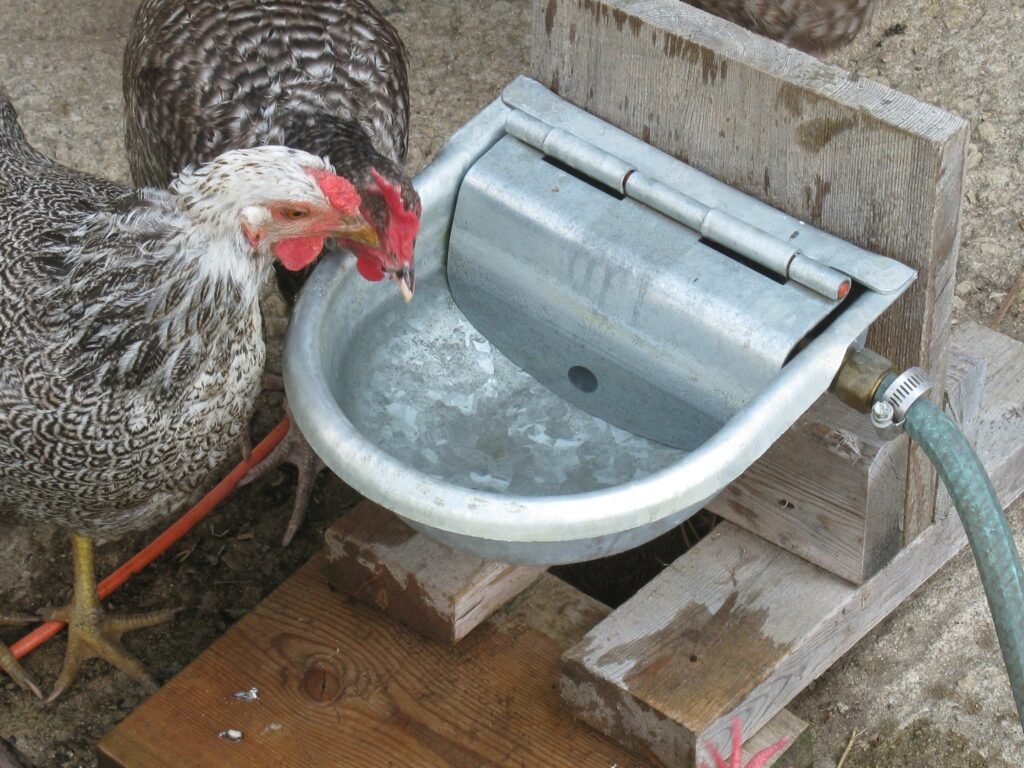
How Auto Chicken Waterers Actually Work
An automatic chicken waterer is basically anything that keeps fresh water flowing to your flock with minimal effort on your part. Some use gravity from a raised container, others hook directly into a water line or garden hose using a float valve system.
The version I use is a simple valve-controlled bowl that fills automatically and shuts off when full — and yes, it actually works. No overflows, no guessing, no puddles turning your coop into a swamp.
The best part? It’s not just for chickens. My setup pulls double duty for the goats, too. When done right, an auto waterer for chickens can handle more than just one species.
Also worth noting — if you’re fighting off green slime in your current setup, pairing an automatic system with a bit of copper in the water helps keep algae under control without scrubbing buckets every few days.
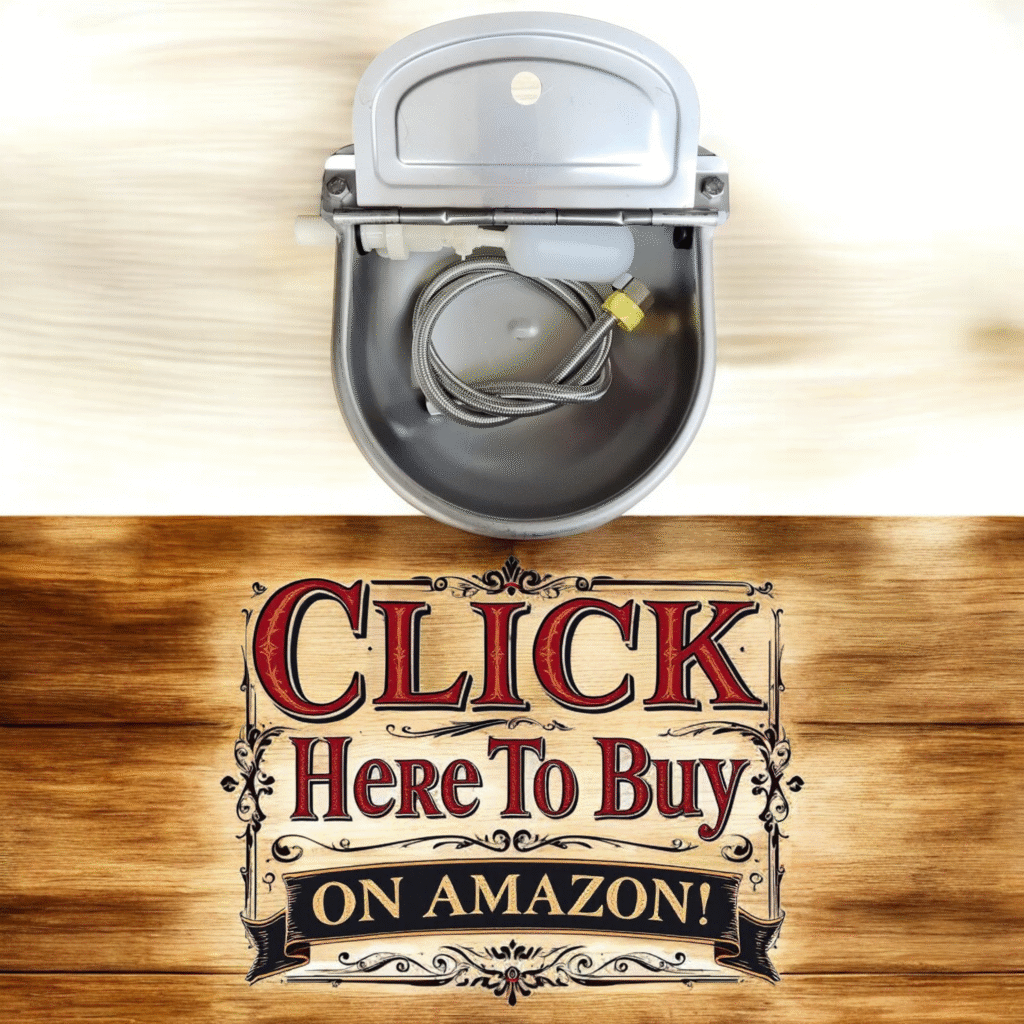
What to Look for in a Good Auto Waterer for Chickens
Not all automatic waterers are created equal — and I’ve learned that the hard way. Some are flimsy, some don’t seal properly, and some just aren’t made with chickens in mind. So if you’re hunting for the best waterer for chickens that doesn’t need babysitting, here’s what to look for:
- Solid build: Skip the brittle plastic. Go for stainless steel or heavy-duty composite.
- Reliable float valve: This is what controls the water shutoff. If it sticks open or leaks, it’s a mess.
- Hose compatibility: A simple ¾” garden hose hookup is ideal. No special parts, no plumbing degree required.
- Low profile but not ground-level: Keep it low enough for chickens to reach, but high enough to avoid mud splash.
- Easy to clean: No funky corners or hard-to-reach spots. You’ll still want to scrub it now and then.
- Safe for curious beaks: No exposed parts they can peck off or try to eat.
And if you’ve got other animals — goats, dogs, even the occasional rogue barn cat — an auto waterer that works across the board can really simplify your setup.

The Auto Water Bowl I Use (And Why I Recommend It)
I’ve gone through my share of DIY setups, gravity-fed jugs, and cheap plastic options. Most of them worked — sort of — until they didn’t. What finally clicked was something much simpler: a valve-controlled chicken water bowl that just… works.
This automatic livestock waterer bowl has been running in my coop for months now. It comes with a 39-inch hose, hooks up directly to a standard hose bib, and the float valve shuts off cleanly every time the bowl fills. No spills. No flooding. And no standing out there in boots, trying to un-kink a hose in 100-degree weather.
It’s built for multiple animals, but the size is just right for chickens — not too deep, not too shallow. I mounted mine right at head level on a fence post inside the run, and my hens took to it right away.
I’m not trying to sell you something fancy — just letting you know this one works. And for less than the cost of a good bag of feed, it’s made daily chores easier and water duty practically effortless.
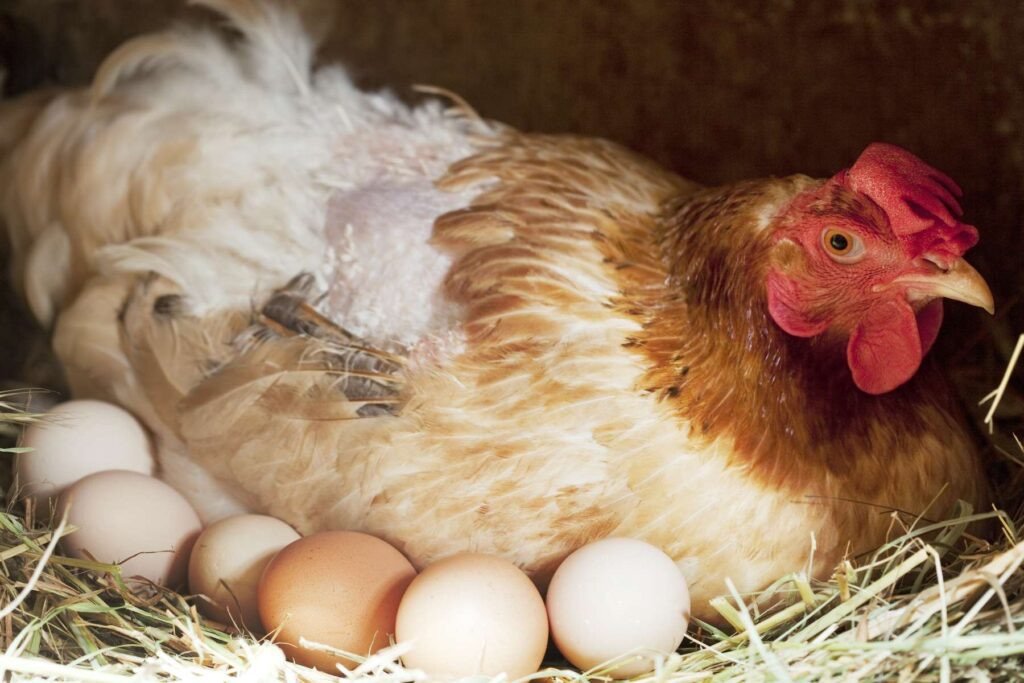
How to Install an Auto Waterer for Chickens
One of the things I liked most about setting up an auto waterer for chickens was that I didn’t have to overthink it. No complicated plumbing, no fancy attachments — just a garden hose, a few zip ties, and five minutes of time.
Here’s how I set mine up:
- Pick a shady spot in your coop or run — keeping it out of the sun helps prevent algae.
- Mount the bowl to a sturdy fence post or coop wall, at about chest height for your chickens. I used two heavy-duty zip ties, but screws work too.
- Attach the included hose to your outdoor spigot or hose splitter. This auto-filling livestock waterer came with a 39-inch hose that connected right to my garden hose line.
- Turn the water on slowly and check the float valve. You’ll hear it fill and then shut off once the bowl hits the right level.
- Watch your chickens — most of them will figure it out fast. If not, guide them over and let them see it’s a water source.
That’s it. No buckets to fill, no back-breaking hauling. Just consistent, clean water — and peace of mind that my flock’s taken care of even when I’m busy.
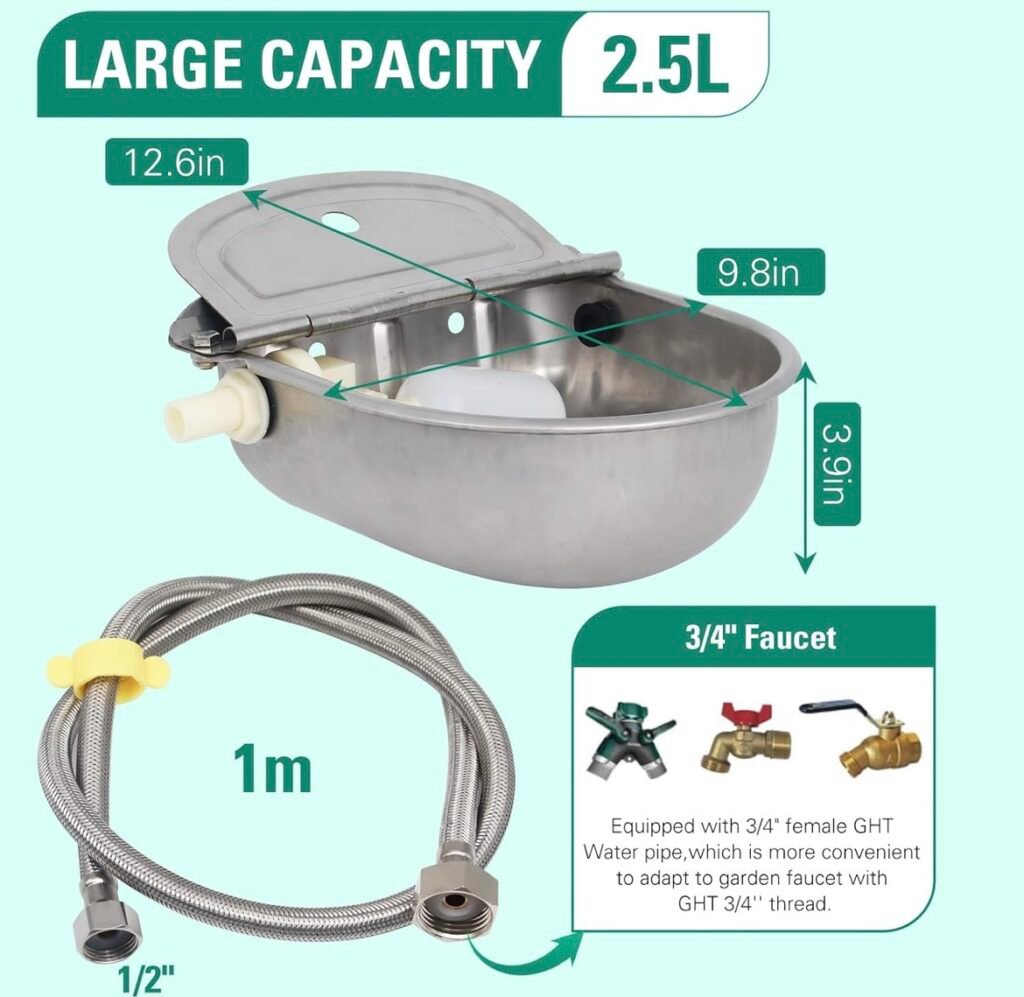
Common Mistakes to Avoid with Chicken Auto Waterers
Now, I’ve learned a few things the hard way, so here’s what not to do when setting up your automatic chicken waterer:
- Don’t mount it too low — the closer it is to the ground, the more dirt, bedding, and poop will end up in the bowl.
- Check the valve occasionally. Even the best systems can stick from time to time. It takes two seconds to lift the float and make sure it moves freely.
- Keep the hose secure. If the hose drags or gets twisted, water flow slows down or stops altogether.
- Place it in the shade if you can. Just like I mention in this post about copper in chicken water, direct sun speeds up algae growth — copper helps, but location matters too.
One more thing: don’t assume your chickens will “just find it.” Most will, but if they’re used to a different setup, give them a day or two to adjust. I kept my old gravity waterer nearby at first, then phased it out once they started using the auto bowl regularly.

Do Chickens Use These Automatically?
For the most part — yep, they figure it out fast.
Chickens are curious little creatures. As long as they see the water and can reach it easily, they’ll start drinking from it without much coaxing. When I switched to an auto waterer for chickens, I left the old waterer in place for a day or two while they adjusted. It wasn’t long before they stopped touching the old one completely.
The key is making sure the bowl is at a comfortable height — not too high, not too low — and that the water is clean and visible. If your birds are new to a bowl-style setup, just tap the surface of the water with your finger a few times. Chickens learn fast when they see movement and hear water splashing.
And with the automatic animal water bowl I use, I didn’t need to teach them anything fancy. The water sits at just the right level, and once they tried it, they were all in.

Should I Still Keep a Backup Waterer?
As much as I trust my automatic chicken waterer, I do keep a basic backup nearby — especially in the summer or when I’m going to be out of town for a day.
Float valves can get stuck, hoses can kink, and things just happen sometimes. Having a small backup waterer gives me peace of mind and keeps the flock hydrated no matter what.
That said, I’ve had no major issues with this auto-filling livestock water bowl so far. It’s held up better than the DIY chicken waterer setups I tried before — and it’s made daily chores way easier.
I still clean it out now and then, especially if a hen decides to roost above it (been there), but for the most part, it just works.
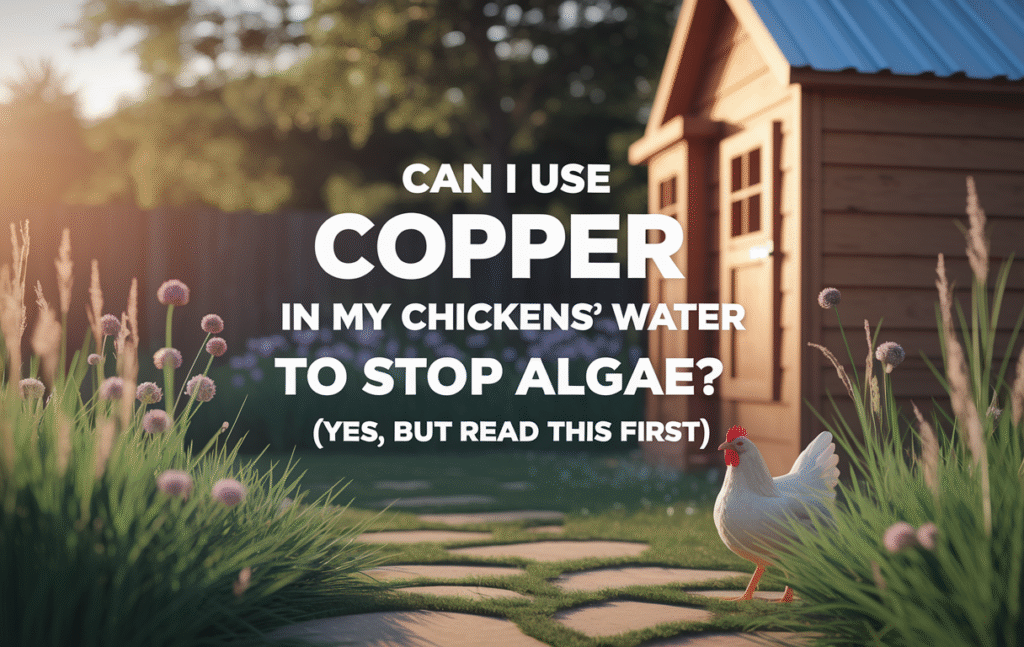
My last Thoughts on Switching to an Auto Waterer for Chickens
If you’re still refilling plastic jugs every day or fighting green slime in your water buckets, making the switch to an auto waterer for chickens is one of the smartest, low-effort upgrades you can make.
It’s not about going high-tech — it’s about making your daily routine easier and giving your flock access to clean water around the clock. Whether you’ve got 5 hens or 50, reliable water is one of the best things you can give them.
I’ve been using this automatic animal water bowl with float valve for a while now, and it’s been solid. Easy to install, holds up well, and no more dragging hoses back and forth just to top off a gallon at a time.
Clean water leads to healthier chickens, fewer problems, and better egg production — especially when you pair it with tips like when chickens start laying eggs and how to stop algae in their water. Small upgrades like this one make a big difference — both for you and your birds.
As an Amazon Associate we earn from qualifying purchases through some links in our articles.

